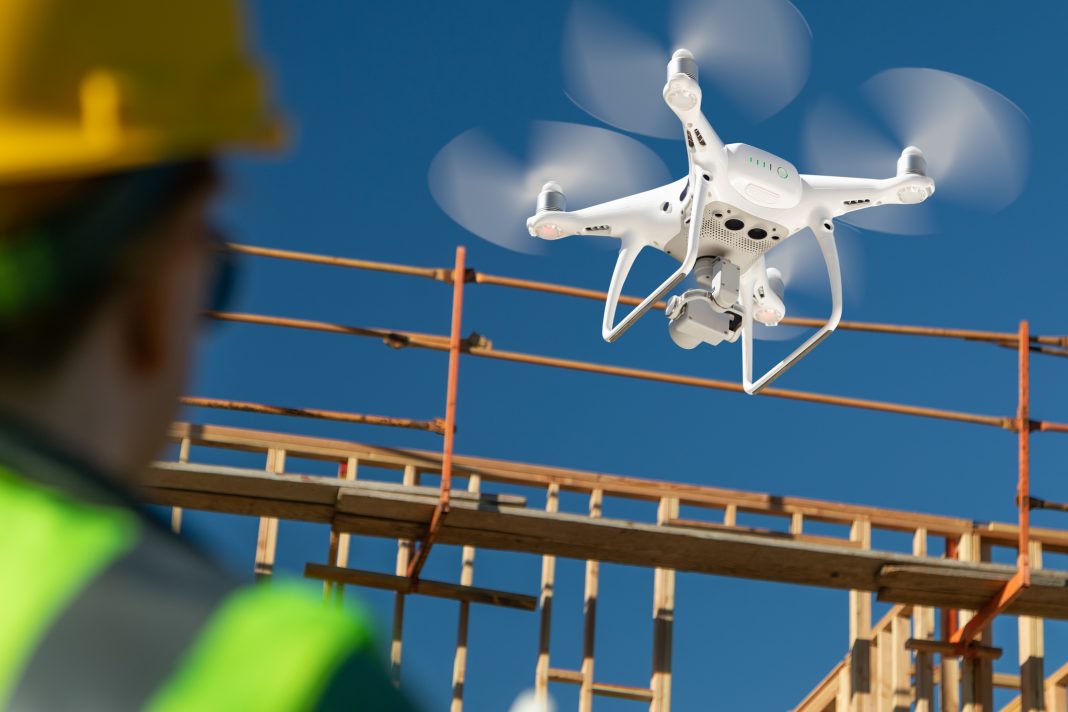Ian Tansey of ProDroneWorx looks at how the digital outputs from drone technology are being used for planning, maintenance, inspection, management and surveying of assets
Drone technology, cameras and data processing have come a long way over the last few years and are now a creditable alternative to the traditional ways of assessing assets by building surveyors or facilities management firms. RICS recently published a report on this subject for its members highlighting some of the benefits.
The technology can be used to gather digital asset data for pre-acquisition surveys, due diligence surveys, planned maintenance programmes, dilapidation surveys or schedule of conditions. The digital data provides deeper data insights, better collaboration on projects, improves data deliverables to clients while reducing costs and risks.
Drone technology can be used for different types of asset/portfolio surveys, eg residential, commercial or industrial roof, façade or building inspections. The digital outputs from drone technology can be as simple as geo-tagged HD images or video to more complex outputs like a 3D point cloud, 3D textured model, 2.5D digital surface model (DSM), 2D orthomosaic or 2D Google KMZ files. The digital data can also be used to create 2D CAD drawings of roof structures, eg when traditional methods can’t get access to the roof structure due to health and safety issues.
Drone technology is a value-adding tool for most asset/portfolio inspections as it’s safe, quick, economical and there is no business disruption. The digital data produced from drone technology can be used by the surveyor as part of their assessment on the condition of the asset.
Some companies are starting to look at how they manage the digital outputs from a drone inspection as a large amount of information can be captured and sent to the surveyor for analysis. A cloud-based platform can be used to store, manage, share and analyse the digital data. This type of system allows multiple users within a company to analyse the data, include annotations and then produce a PDF and/or Excel report based on all the defects/issues that were identified. This information can be shared with contractors for pricing repairs or maintenance.
Managing asset inspection data digitally has many benefits:
- Improves team collaboration and workflow on projects.
- A digital record of an inspection in time.
- Gives the ability to compare inspection data over multiple time periods.
- Data can be digitally shared with contractors for pricing of works.
- Communicate with the client on works to be carried out.
Drone technology can be used for asset inspections in congested cities like London or Birmingham, as well as more rural or less congested areas.
It’s important to engage a drone operator with the right skills, equipment, insurance and importantly CAA licence to carry out the operation. A small percentage of operators in the UK have a special licence from the CAA called an OSC (Operational Safety Case), which allows them to carry out complex drone operations in heavily congested (urban) areas. ProDroneWorx has a licence to operate within 20m of buildings, people and vehicles outside their control. When operating in London and other big cities, it’s not unusual to have to get permission from NATS, the Metropolitan Police and the Diplomatic Protection Group (DPG) to carry out an asset inspection.
Ian Tansey
Managing Director
Tel: +44 (0)7805 864642
Twitter: ProDroneWorx
LinkedIn: Prodroneworx














